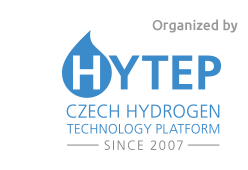Prague
Prague offers a compact city center, a fascinating centuries - long history with splendid examples of Romanesque, Gothic, Baroque, Renaissance and Art Nouveau architecture. What attractions you definitely can not miss? There are lots of tourist attractions and things to do, and we made a list of 10 amazing places to visit in Prague!
Charles Bridge
Prague’s oldest bridge was built to replace the Judith Bridge that had been badly damaged by floods in 1342. The Stone, or Prague, Bridge, called Charles Bridge since 1870, was begun in 1357 by Charles IV and was completed in 1402. The bridge is built of sandstone blocks, flanked at each end by fortified towers (Lesser Town Bridge Towers, Old Town Bridge Tower). From 1683 to 1928, 30 statues of saints were carved to decorate the bridge, the most famous of which is the statue of St John of Nepomuk.



Old Town Square
The most significant square of historical Prague, it was founded in the 12th century and has been witness to many historical events. In addition to the Old Town Hall and the Church of Our Lady before Týn, the square is dominated by the Baroque Church of St Nicholas, the Rococo Kinský Palace, the Gothic House at the Stone Bell and the monument to Jan Hus. In the pavement of the square are memorial stones marking the execution of 27 Czech lords in 1621, and the Prague meridian.



Dancing House
This pillar of modern architecture in Prague “danced” onto the Rašínovo Embankment in 1996. The project comes from the drawing board of world-renowned architects Vlado Milunić and Frank O. Gehry. Its concept was inspired by the dance skills of the famous film couple – the stone tower symbolizes Fred Astaire and the glass tower, his partner Ginger Rogers. A gallery and a restaurant with a terrace offering a 360° view of Prague can be visited in the Dancing House.
National Memorial on the Vítkov Hill
Under the name National Liberation Memorial, the memorial was built in the years 1928–1938 in honour of the Czechoslovak legionaries; it was re-built and extended after the end of the WW2 in order to commemorate the second – anti-Nazi resistance. After 1948, it was used to promote national ideology and regime. Prominent representatives of the Communist Party of Czechoslovakia were buried here. The mausoleum of Klement Gottwald was established here in 1953. The Memorial slowly started to be forgotten. After 1989, all of the remains buried here were taken away, however, for a long time particular utilisation was a subject of discussion. In 2001, the Vítkov National Memorial became part of a government resolution on rehabilitation and reconstruction of some memorials related to Czechoslovak history of the 20th century.



Prague Castle, and Cathedral of St Vitus, St Wenceslas and St Adalbert
Prague Castle has been an important symbol of the Czech state for more than a thousand years. It was founded in the 9th century and became the seat of Czech rulers and later presidents. The castle, one of the largest complexes in the world, is made up of historical palaces, offices, church and fortification buildings, gardens and picturesque spots. It covers an area of 45 hectares. The panoramic view of Prague Castle is one of the most spectacular in the world.
This Gothic cathedral, the spiritual symbol of the Czech state, was founded in 1344 on the site of the original Romanesque rotunda. The construction took nearly 600 years and was finally completed in 1929. Its impressive interior is home to such wonders as the beautifully decorated St Wenceslas Chapel with the tomb of St Wenceslas, the crypt where Czech kings are buried, and the Crown Chamber, where the Crown Jewels are kept.



John Lennon Wall
Shortly after the death of John Lennon, this stone wall surrounding the Maltese Gardens was transformed into an impromptu memorial with a painting of the singer's face. Lighted candles accompanied quotes from John’s songs about world peace and freedom, and soon slogans criticizing the totalitarian regime began to appear. With the arrival of democracy, the wall has lost some of its significance. Now it is decorated by a portrait of John Lennon and pictures created by more than 30 artists from five countries. Everyone still can express his/her opinion there, while using a pencil, a fix or a piece of chalk. Spraying is forbidden there.
Municipal House
This Art Nouveau building, built from 1905 to 1911, is proof of unprecedented artistic and craft skills and quality. The café, the French and the Pilsner restaurants, the American bar, the Lord Mayor’s Salon and the Smetana Hall are all examples of perfectly executed Art Nouveau interiors, decorated by leading artists and sculptors such as Alfons Mucha, Jan Preisler, Ladislav Šaloun, and others. Lovers of Art Nouveau can take a guided tour of the whole building.

.jpg)
.jpg)
The Jewish Museum in Prague
Prague’s Jewish Museum, one of the oldest and continuously existing Jewish museums in the world, was founded in 1906. The mission of the museum is to document the history, traditions and customs of the Jewish population in Bohemia and preserve valuable artefacts from the Prague synagogues that were destroyed during the liquidation of the Prague ghetto. In addition to the permanent exhibitions, some of the buildings also hold concerts and temporary exhibitions.
Vyšehrad
The history of Vyšehrad is closely connected with the evolution of Prague districts and the history of the Czech nation. The massive rock looming high over the Vltava River was a tempting location for settlements since the most ancient times and became a subject of many legends. It was a royal castle, even the seat of a monarch for a short period of time. It became a city and later, a Baroque fortress the appearance of which it has retained to these days. At the end of the 1800s, Vyšehrad became a national symbol and the cemetery of the most famous Czechs. Today, Vyšehrad is a popular destination for walks with breathtaking views of the city and a number of major monuments.



Wenceslas Square
This square is the commercial and administrative centre of the city as well as the site of important social and historical events. Here you'll find cinemas, theatres, banks, hotels, restaurants, dozens of small and large shops, and administrative centres. The square was created during the founding of the New Town by Charles IV in 1348. Today it is dominated by the National Museum (1885 – 1891) and Josef Václav Myslbek’s statue of the national patron St Wenceslas from 1912.


.jpg)
Following the mention of the restaurants and museum, we managed to get you a special discount code for the Pilsner Urquell "The Original Beer Experience Prague" which is located at Wenceslas Square! Register for the Hydrogen Days 2025 and you will get a special code for "The Original Tour" and/or "Tapster Academy".




